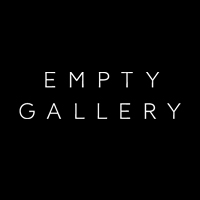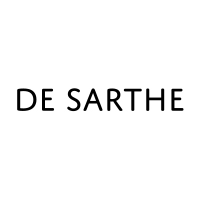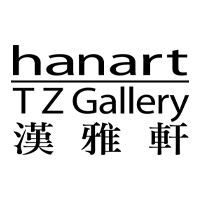Zane Edwards’s “Eventually, I’ll Confess, I’ve Just Been Walking Into A Loving Nowhere”
By Annabel Brown

Installation view of ZANE EDWARDS‘s "Eventually, I’ll Confess, I’ve Just Been Walking Into A Loving Nowhere" at Sutton Gallery, Melbourne, 2025. Courtesy Sutton Gallery.
Zane Edwards
“Eventually, I'll Confess, I've Just Been Walking Into A Loving Nowhere”
Sutton Gallery
Melbourne
Feb 1–22, 2025
Presented at Sutton Gallery’s newly reopened project space, “Eventually, I’ll Confess, I’ve Just Been Walking Into A Loving Nowhere” was the career-first solo show of Naarm-based multidisciplinary artist Zane Edwards. The exhibition was sparse, featuring 11 photographic prints dispersed throughout the space—some positioned at eye level, others close to the ground or the ceiling. On the floor, a rumpled grey singlet was draped over a pair of worn sneakers. The singlet is screen-printed with fading phrases that resemble fragments of poetry, their cadence desperate.
The viewer’s first encounter was with With (2025), a polished stainless-steel box hung perpendicular to the gallery’s left wall. The frame is double-sided, with inkjet prints displayed on both sides. The front panel, With (side A), features a close-up image of a hand tightly gripping a clothed crotch, with a saccharine Sanrio bunny engraved in the steel border above the image. The reverse panel, With (side B), features an image resembling a headstone sculpture of a winged angel pressing its lips to a young man’s forehead. Viewed together, like two sides of a coin, the photographs juxtapose the ecstasy of desire with a softly eerie allusion to death.

ZANE EDWARDS, Communing, 2024, inkjet photographic print on gator board, 90 × 60 × 1.5 cm. Courtesy Sutton Gallery, Melbourne.
Looking up, one saw three enlarged inkjet prints mounted near the ceiling, wrapped around the corner of the gallery. Communing and G-d (both 2024), capture Edwards’s own shadow stretching across bare dirt. With (2024), a picture of a large rock, completes the trio of ambiguous images. While alluding to disparate moments captured during a journey, the three photographs, entirely unmoored from narrative and any specificity of time or place, exude mystery and intrigue.
The opacity of Edwards’ images is deliberate; this is most evident in the sequence of grainy monochromes that were installed along the gallery’s back wall. There Edwards’s overlaid manipulated selfies and Polaroid snapshots, creating atmospheric, ghostly compositions that hover between presence and absence, lucidity and obscurity. The figure slips in and out of our perception in these works, which Edwards created in 2024. In Jeans, My Favourite, My, and I, Edwards’s body is fractured, fragmented, or free-floating, while in Past and Ass, all original forms appear obliterated, rendered ethereal by the camera’s flash.

Installation view of ZANE EDWARDS’s With, 2024, inkjet photographic print on gator board, 90 × 60 × 1.5 cm (left); G-d, 2024, inkjet photographic print on gator board, 90 × 60 × 1.5 cm (right). Courtesy Sutton Gallery, Melbourne.

ZANE EDWARDS’s My Favourite, 2024, archival luster inkjet print on Dibond, 45 × 30 cm. Courtesy Sutton Gallery, Melbourne.
In destabilizing these images, Edwards pursues an undoing of both self and identity—an idea that resonates with 20th-century French philosopher, activist, and mystic Simone Weil’s concept of “decreation.” Weil describes decreation as an effort to “undo the creature in us”—a double gesture of dismantling both oneself and the very notion of the self. The concept carries an implied sense of violence, which is evident in Weil’s self-induced starvation, as she took this idea to the extreme, seeking to decreate herself to the point of trying to survive without eating at all. For Edwards, however, this kind of willing self-corrosion does not signify corruption or entropy in the dissolution of the self, nor does it reflect a dystopic desire to strip the self down to a divine state of nothingness.
Edwards’s photographs subtly evoke this kind of undoing without slipping into descent or obliteration. Instead, they frame decreation as a destabilization of the self—displacing the body into a continuous flow of change, rendering it more responsive to affective shifts. Neither stable nor fixed, the self becomes inherently transitive. Taken together, Edwards’s works embody the emotional sedimentation entangled with memory. Yet, in the way they become detached from one another—reconfigured and externalized in this exhibition as fragments devoid of a verbal key or storyline—they enact a metaphorical slippage. This process captures and gives form to the fluid nature of identity—the way we continuously evolve, remembering and forgetting, creating and erasing, gaining and losing.
Annabel Brown is an art writer and curator based in Naarm (Melbourne).







